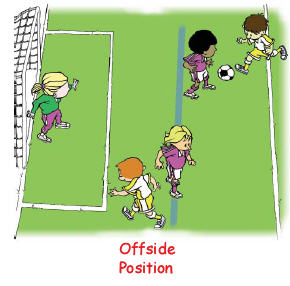
-
Closer to the other team's goal than the ball,
and
-
Closer to the other team's goal than the second to last defender.
and
-
In the other team's end of the field
|
LAW 11 - OFFSIDE |
| An attacker is in an offside position if, when a teammate has touched or played the ball, the attacker is |
 |
and
and
|
 It is not illegal for a player to be in an offside position |
 |
| What is illegal is when an attacker who is in an offside position becomes actively involved in play by: | |
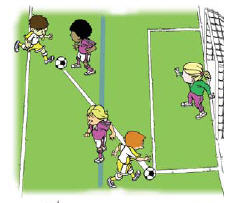
 |
Interfering with play Having the ball passed to you by a teammate (most common way). You are interfering with play, the moment that you touch the ball Moving to play a ball that wasn't played directly to you (again, you must touch the ball before you are interfering with play) |
 |
Interfering with an opponent (getting in the way of a player on the other team, including the goalkeeper) |
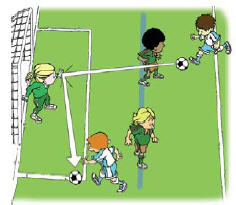 |
Gaining an advantage (receiving or running to a ball which has bounced off a goal post or crossbar or that has been deflected by the goalkeeper or another defender) |
|
When offside is called: Indirect free kick from where the offside player was. |
 |
| It is not an offside violation if a player in an offside position gets the ball directly from: | |
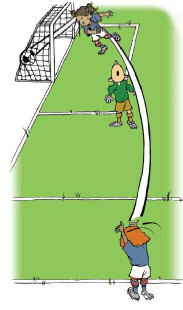 A throw-in |
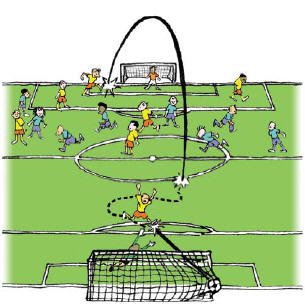 A goal kick |
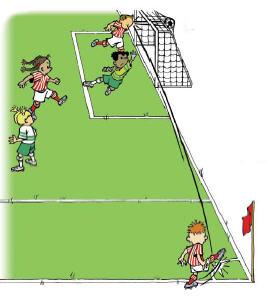 |
A corner kick |
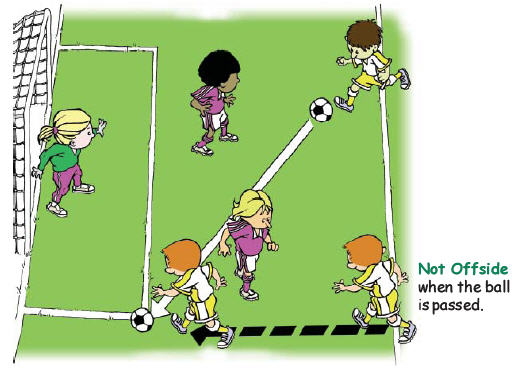 |
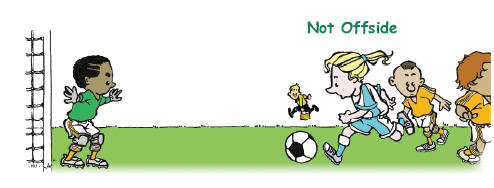 |
|
Offside In each of these plays an attacking player gets involved from an offside position |
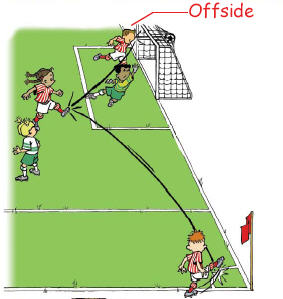 |
 |
|
| Player is coming back from offside position |
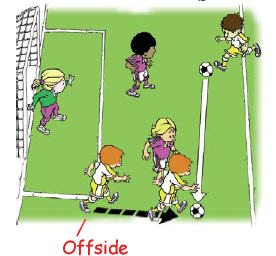 |